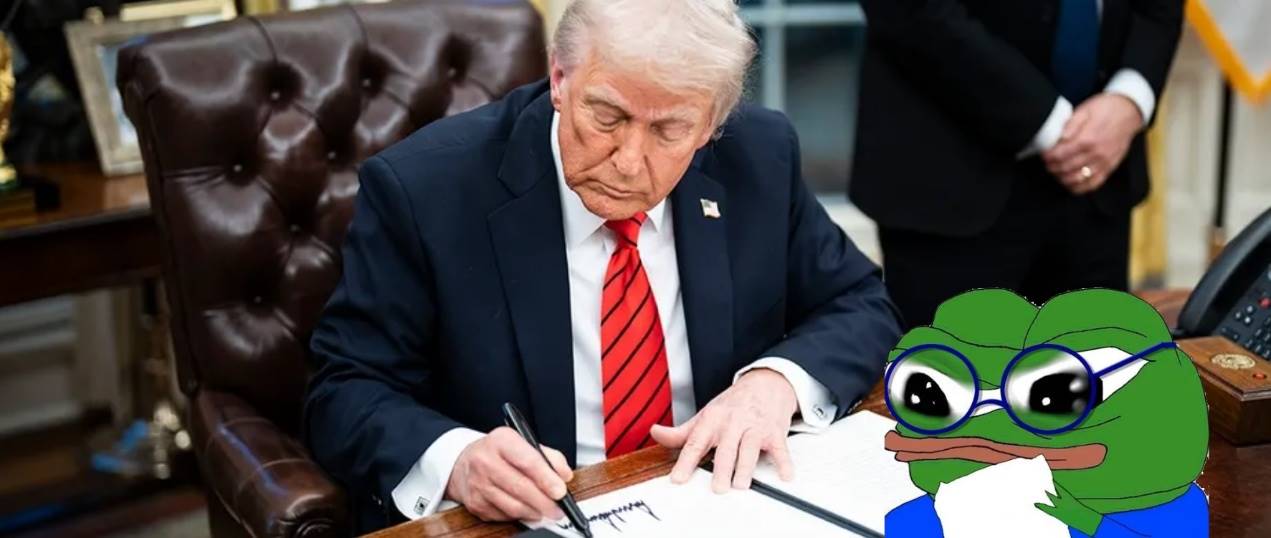撰文:郝奕程

摘要:12万亿美元市场的重构。
“然而,我们必须清醒地认识到,这仅仅是打开了一扇大门,资金并不会一蹴而就。短期内,它对市场情绪的提振作用大于实际的资金流入。长期来看,其真正的价值在于它所释放的监管信号:加密资产正在被纳入美国最重要的财富管理体系进行考量。”
2025 年 8 月 7 日,美国总统唐纳德·特朗普签署了一份题为 《Democratizing Access to Alternative Assets for 401(k) Investors》 的行政令,旨在让所有参加雇主退休计划的美国人能够享有与机构投资者类似的另类资产投资机会,包括私募股权、房地产、商品、基础设施项目以及数字资产(加密货币)。这一举措涉及规模高达 12.5 万亿美元 的退休资金,可能对加密、私募、房地产等市场带来深远影响。
一、什么是401(k)
401(k) 是美国的一种企业退休储蓄计划,名字来自《美国国内税收法》第 401(k) 条款。它的核心机制是:由雇主提供,员工自愿参与,通过税收优惠鼓励储蓄养老。
1. 基本机制
l 雇主提供:公司为员工开设401(k) 账户。
l 员工自愿缴费:从工资中扣除一定比例(如5%)存入账户。
l 税收优惠:
§ 传统401(k):缴费时税前,退休取出时需缴税。
§ 罗斯401(k):缴费时税后,退休取出时免税。
l 雇主匹配:许多公司会按一定比例补贴员工存入的金额(例如,员工存5%,公司匹配 3%),这是该计划的核心吸引力之一。
2. 投资方式
l 自主选择:401(k) 账户内的资金投资于何种标的,由账户持有人在计划提供方给出的可选清单中自主决定(通常包括各类基金、ETF、债券等)。
l 收益递延:投资收益在退休前无需缴税,可实现复利增长。
3. 取款限制
l 通常需年满59.5 岁后才能自由取款。提前取款除了要缴税,还可能面临 10% 的罚金。
4. 体量与重要性
l 截至2024 年,美国 401(k) 计划总资产规模在 8-12 万亿美元之间,是美国民众最重要的退休储蓄工具。其巨大的资金体量,意味着任何投资政策的微小变动都可能引发市场巨浪。
二、行政令核心内容
1. 政策目标
l 为普通美国人“解锁”另类资产的投资机会,缩小其与机构投资者在投资渠道和潜在回报上的差距。
l 鼓励雇主与计划提供方将更多元的投资选项纳入401(k) 计划。
2. 涉及资产类型
l 私募股权与私募信贷
l 房地产与基础设施
l 大宗商品
l 主动管理的数字资产投资工具(例如,加密货币基金、加密ETF 等)
3. 监管安排
l 要求劳工部(DOL)在《雇员退休收入保障法》(ERISA)框架下,为计划发起人(雇主)提供“安全港”(Safe Harbor)指导,明确其信托责任范围,以降低其因提供另类资产选项而面临的诉讼风险。
l 要求美国证券交易委员会(SEC)、财政部等部门评估并调整“合格投资者”门槛,为普通退休账户投资者开辟合规的投资渠道。
l 鼓励市场开发适合退休账户的投资产品,如目标日期基金、集合投资信托(CITs)等,以平衡另类资产的风险与流动性。
三、对加密货币的影响
从资金面、合规性和市场情绪三个维度分析:
1. 资金面:打开长期资金的想象空间,但流入过程缓慢
l 理论资金池:美国401(k) 及其他确定缴费型退休计划总规模约 12.5 万亿美元。理论上,即便只有 1% 的资产配置到加密领域,也可能带来高达 1250 亿美元的增量资金。
l 流入取决于多方选择:必须明确,资金不会自动流入。实际规模取决于雇主是否愿意提供、计划管理人是否上线产品以及员工是否主动选择配置。这是一个多方博弈的漫长过程。
l 长期持有属性:401(k) 资金具有极强的长期性和稳定性,进入加密市场的资金大概率会成为“耐心资本”,有助于降低市场整体的抛压和波动性。
l 标志性事件:贝莱德(BlackRock)已宣布计划在 2026 年为 401(k) 推出首批加密相关投资产品,这可能成为加密资产首次大规模进入美国退休账户的催化剂。
2. 合规性:获得制度化的“准入证”
l 行政令首次在联邦层面的长期退休投资政策中正面提及“数字资产”,这为加密货币作为一种合法的、可配置的资产类别提供了强有力的制度背书。
l 此举将极大推动加密资产相关金融产品的合规化进程,为SEC 后续批准更多加密 ETF 或基金扫清障碍。
3. 市场情绪:短期提振与长期信心的基石
l 短期内,这一消息将成为市场情绪的重要催化剂,可能引发一轮围绕“合规”和“机构资金入场”的炒作。
l 长期来看,制度化的接纳有助于提升整个市场的信任度,吸引更多传统投资者关注和进入,并推动相关基础设施的完善。
四、机遇与挑战
1. 机遇
· 巨大的潜在资金流入:可能重塑加密资产的资金结构,引入更多长期、稳定的“耐心资本”。
· 推动与传统金融的深度融合:使加密资产从“另类投资”向“主流资产配置”迈出关键一步。
· 催生合规产品创新:为资产管理公司、托管机构和金融科技公司创造广阔的市场空间。
2. 挑战
· 监管与法律的复杂性:行政令的法律效力有限且易被推翻,主要起指导作用。真正的制度化需要国会对《ERISA》等根本性法律进行修订。在此之前,政策的不确定性依然存在。
· 信托责任的强大阻力:雇主作为401(k) 计划的信托责任人,对引入高波动性资产极为敏感。出于规避法律诉讼和管理成本的考虑,他们将是加密选项进入 401(k) 的“最终守门人”,其接受过程可能非常缓慢。
· 投资者的行为惯性与教育鸿沟:大部分401(k) 参与者并非专业投资者,倾向于选择默认的低风险投资组合(如目标日期基金)且很少变动。让他们主动选择高风险的加密资产,需要大规模且有效的投资者教育。
· 产品自身的局限性:加密资产普遍存在高波动性、估值复杂和交易费用较高等问题。如何设计出既能反映市场收益,又能满足退休账户对风险控制和低成本要求的产品,是资产管理公司面临的核心难题。
五、总结
从新罕布什尔州和德克萨斯州推动比特币储备法案,到此次联邦层面的行政令,美国正逐步为加密资产融入主流金融体系铺平道路。特朗普签署的这项行政令,无疑是加密货币走向制度化和主流化的里程碑事件。
然而,我们必须清醒地认识到,这仅仅是打开了一扇大门,资金并不会一蹴而就。短期内,它对市场情绪的提振作用大于实际的资金流入。长期来看,其真正的价值在于它所释放的监管信号:加密资产正在被纳入美国最重要的财富管理体系进行考量。
未来,实际的资金流入规模将取决于监管细则的落地、合规产品的丰富程度、雇主的接受意愿以及最终每一位普通投资者的自主选择。这条路依然漫长,但方向已经变得前所未有的清晰。
免责声明:本文章仅代表作者个人观点,不代表本平台的立场和观点。本文章仅供信息分享,不构成对任何人的任何投资建议。用户与作者之间的任何争议,与本平台无关。如网页中刊载的文章或图片涉及侵权,请提供相关的权利证明和身份证明发送邮件到support@aicoin.com,本平台相关工作人员将会进行核查。




